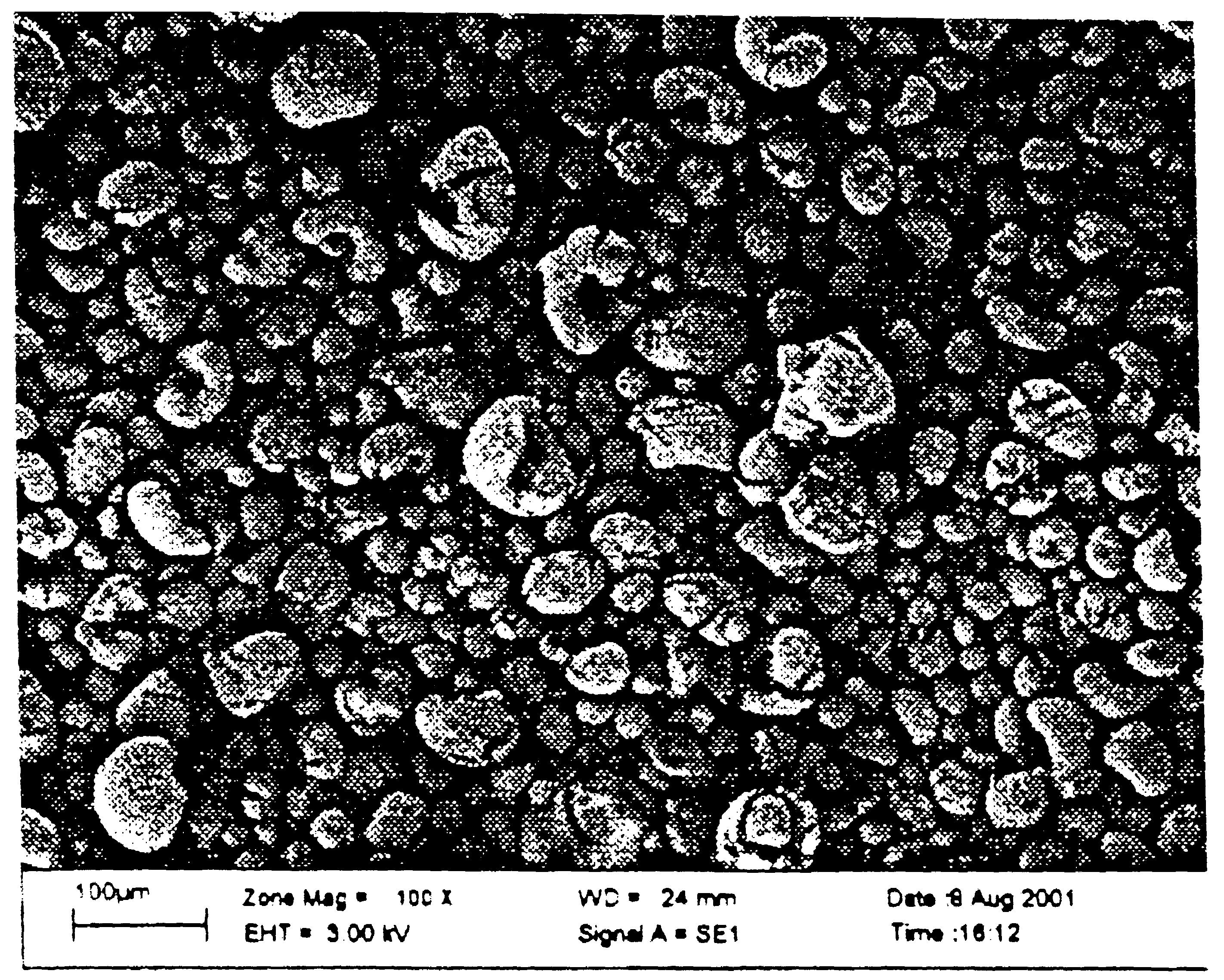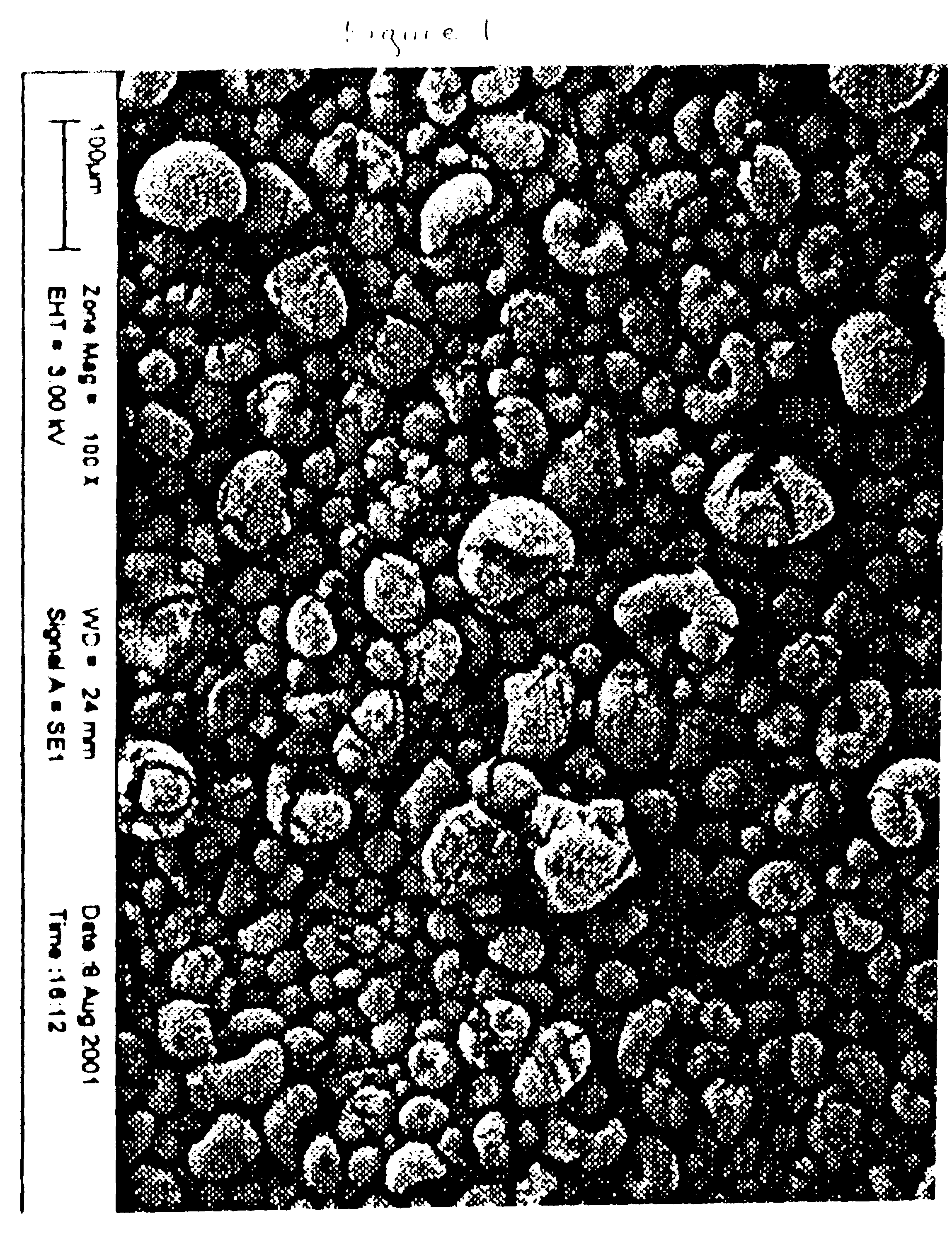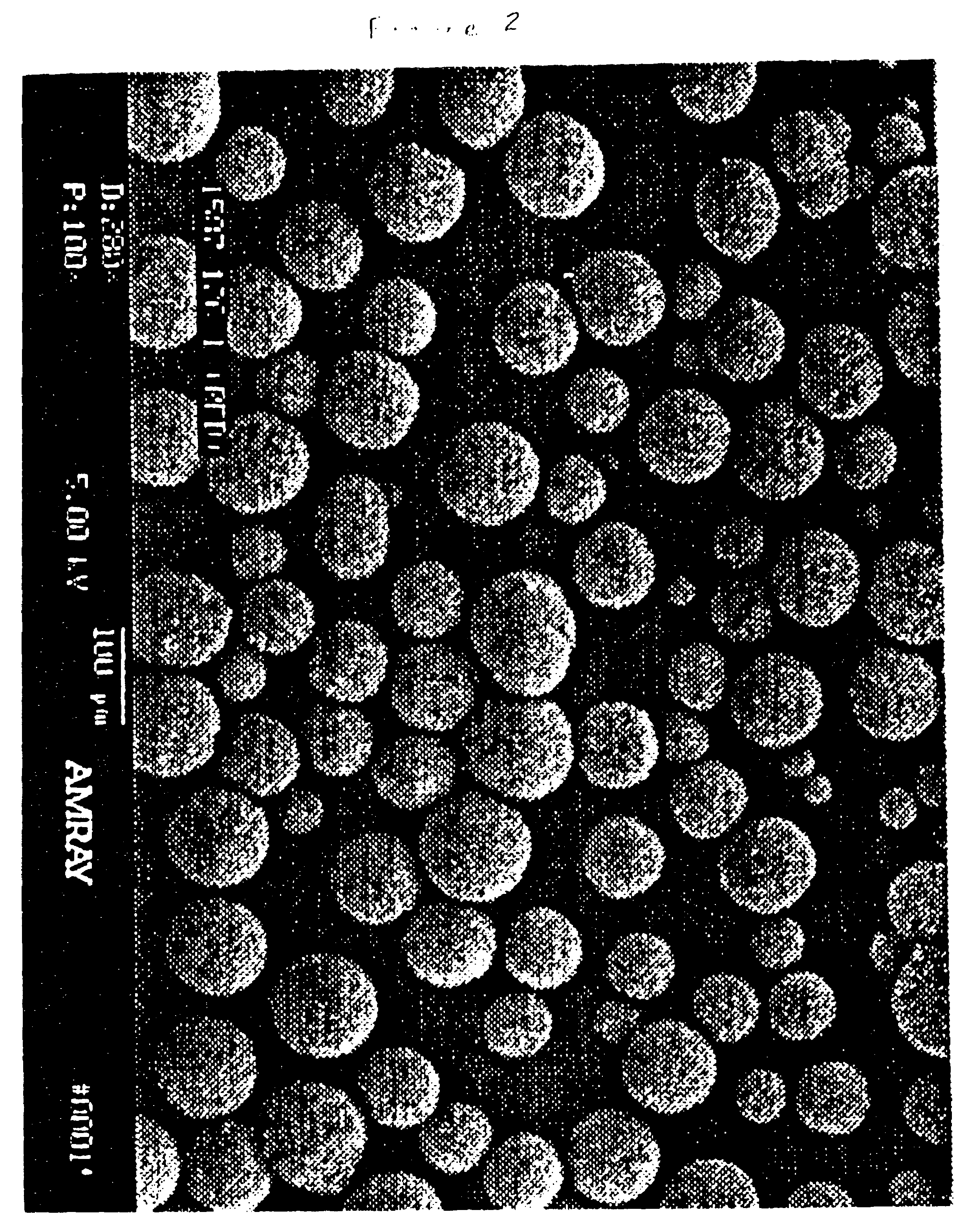Fischer-tropsch catalyst prepared with a high purity iron precursor
a high-purity iron and catalyst technology, applied in the direction of organic compound/hydride/coordination complex catalyst, metal/metal-oxide/metal-hydroxide catalyst, physical/chemical process catalyst, etc., can solve the problem of rapid deactivation of iron-based catalysts prepared by this method, increase in methane selectivity, and not achieved commercial use of iron-based fischer-tropsch catalysts in the 1950's. problem, to achieve the effect of significantly reducing was
- Summary
- Abstract
- Description
- Claims
- Application Information
AI Technical Summary
Benefits of technology
Problems solved by technology
Method used
Image
Examples
example 1
[0025]A comparative sample of a Fischer-Trospch catalyst is prepared by a prior art Precipitation method as follows:
[0026]About 30 pounds of iron oxide is produced by adding about 133.55 kg of iron nitrate solution (7% Fe (w / w); commercially available from Shepherd Chemical, Cincinnati, Ohio) to a 45 gallon stainless steel tank. Deionized water is added until the total volume is about 42 gallons. The iron nitrate solution is thoroughly mixed.
[0027]The iron nitrate solution is then fed at a feed rate of about 890 cc / min into an about 8 liter stainless steel precipitation tank with hole cut at about the 6.5 liter level. Essentially concurrently an aqueous ammonia solution (29% w / w) is fed at an initial feed rate of about 400 cc / min into the precipitation tank. The combined solutions have a residence time of about 5 minutes in the precipitation vessel. The solution in the precipitation vessel is mixed with a high shear mixer, and the aqueous ammonia solution feed rate is adjusted such ...
example 2
[0031]A sample of a Fischer-Trospch catalyst is prepared by the comparative method presented in Example 1 except that after the washing and filtration steps, about 25 cc of nitric acid is then added to about 25 pounds of the filter cake and mixed thoroughly so that the filter cake becomes fluid with agitation. Water may be added as necessary to facilitate mixing. The solids content of the solution should be at from about 15% to about 20%. The iron content is then determined, the promoters are added, and the slurry is spray-dried as in Example 1.
example 3
[0032]A sample of a Fischer-Trospch catalyst is prepared by the comparative method presented in Example 1 except that after the washing and filtration steps, the product is milled through a Netzsch mill with SEPR, ER 120A 0.8 / 1.25 mm ceramic beads to a median particle size of less than about 2 μm. The iron content is then determined, the promoters are added, and the slurry is spray-dried as in Example 1.
PUM
| Property | Measurement | Unit |
|---|---|---|
| particle size | aaaaa | aaaaa |
| pKa | aaaaa | aaaaa |
| surface areas | aaaaa | aaaaa |
Abstract
Description
Claims
Application Information
 Login to View More
Login to View More - R&D
- Intellectual Property
- Life Sciences
- Materials
- Tech Scout
- Unparalleled Data Quality
- Higher Quality Content
- 60% Fewer Hallucinations
Browse by: Latest US Patents, China's latest patents, Technical Efficacy Thesaurus, Application Domain, Technology Topic, Popular Technical Reports.
© 2025 PatSnap. All rights reserved.Legal|Privacy policy|Modern Slavery Act Transparency Statement|Sitemap|About US| Contact US: help@patsnap.com



